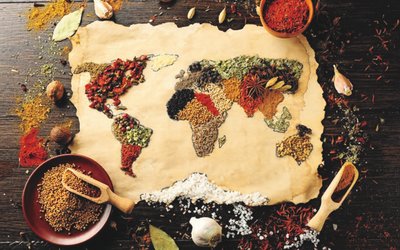Demography will certainly be one of the major issues of the 21st century. Food scarcity and unequal access to food already result in over one billion people suffering from malnutrition. This tendency will only worsen with a global population that is growing steadily and set to reach 9.1 billion by 2050. In its current state, agriculture is unable to feed all those mouths.
According to a report published by FAO, annual cereal production will need to increase by 3 billion tonnes from 2.1 billion today and annual meat production will need to reach 470 million tonnes from its current state of over 200 million tonnes to handle this demographic trend. This raises a major question: How can we respond to such challenge while preserving the environment? An international team of researchers created agricultural models capable to boost global food production while reducing the environmental impacts of the agricultural sector. Their study developed strategies with four purposes:
- Improve crop yields - Some regions, mainly in Latin America, Africa, and Eastern Europe, experience a so-called yield gaps. The latter could be defined as the difference between the actual level of crop yields and the potential yield that could be reached thanks to existing technologies and best practices. Current food production could be increased by 60% by choosing crop varieties better adapted to the local ecosystem, and by training farmers so that they adopt better management and invest in more efficient equipment.
- Stop the expansion of agricultural land – Forests and especially tropical forests are particularly concerned by the increase of the land area dedicated to farming. The damages to the environment would outweigh by far the risk of decreasing food supplies and crop production that would result from that expansion. Therefore, we need to develop financial incentives to preserve trees and the value of forests, such as the REDD programme, in order to slow down deforestation.

- Enhance the management of agricultural resources - Тhe current use of water, nutrients and chemicals can be qualified as unsustainable, at the very least. The aim should be to achieve an optimal use of available resources. For instance, in regions where water is scarce, innovative irrigation practices can improve efficiency, gaining an economic advantage while also reducing environmental threats.
- Reduce food waste – Statistics are unambiguous when it comes to volumes of food that is not consumed. About 88 million tonnes of foods are wasted annually only in the EU and approximately 1.3 billion tonnes worldwide, which represents one third of the food produced for human consumption. All actors involved in the food chain, from farmers to retailers, have a role to play to eliminate food waste.
Combining those strategies and supporting them with the power of the Internet of Things (IoT) could ensure global food availability. At the same time, it would allow to lower water use and water pollution, decrease the emissions of CO2 and avoid further damage to biodiversity. Adopting of technologies such as precision farming can unlock the potential of boosting yields and better managing of resources. It can also improve farmers’ decision-making thanks to real-time data obtained from connected sensors in fields. And most importantly, it would better enable us to feed 9 billion people.